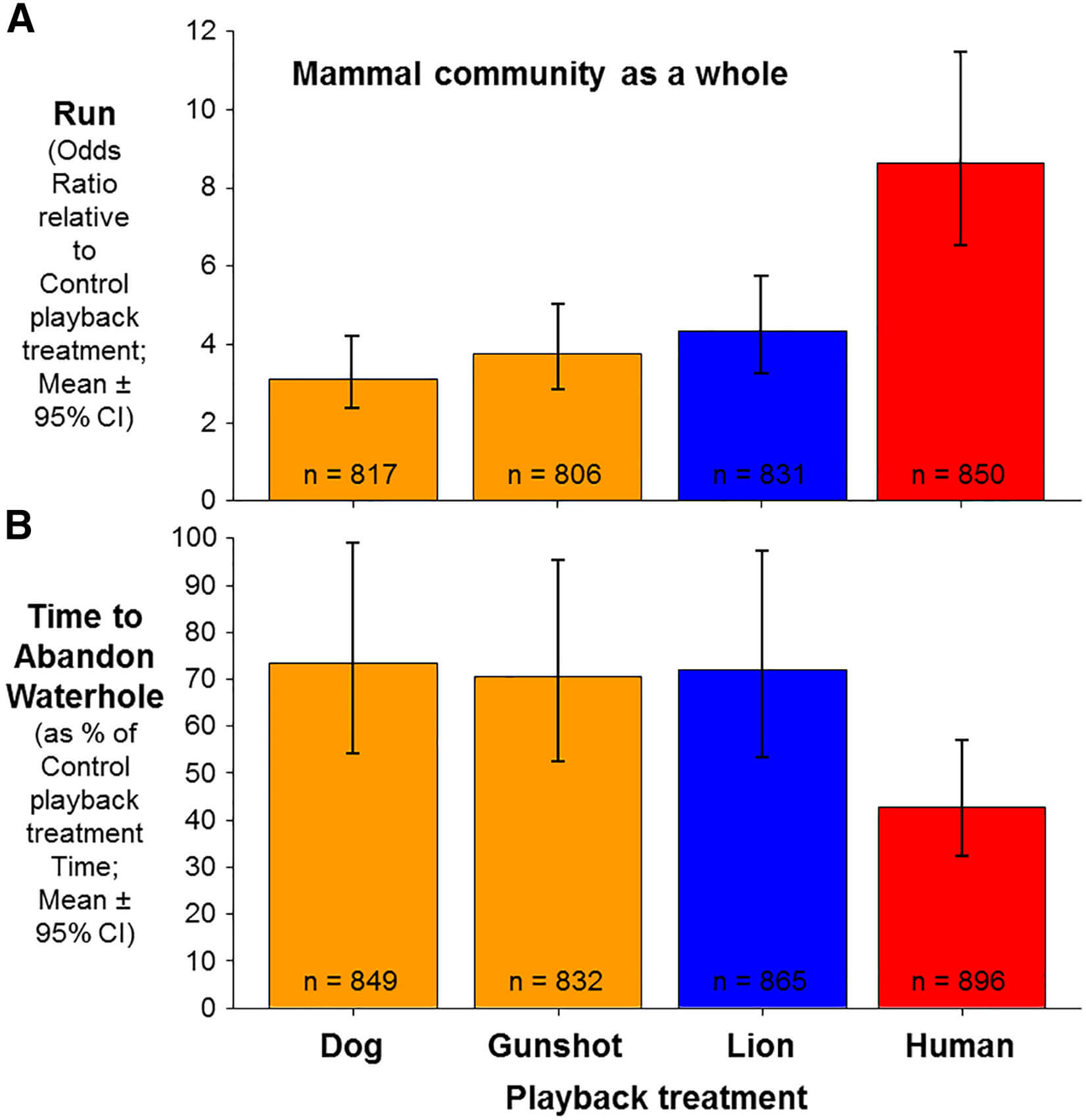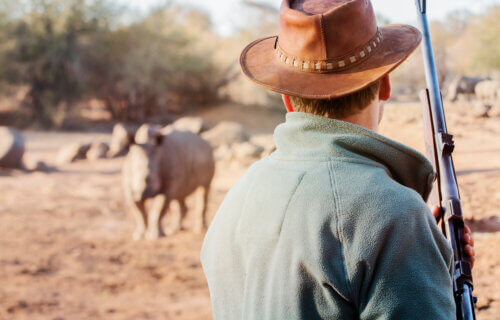LONDON, Ontario — Humans have overtaken lions as the most feared “super predator” in the South African savanna, a new study reveals. The research suggests that fear of people is more pronounced among elephants, rhinos, giraffes, and 19 other savannah mammals than it is for the mighty big cats.
This revelation is supported by similar findings from wildlife studies globally, highlighting the pervasive fear of the human “super predator” throughout diverse ecosystems. The researchers utilized thousands of video recordings from South Africa’s Greater Kruger National Park, a premier conservation area and home to one of the world’s most extensive lion populations.
The team’s observations, in collaboration with lion specialist Dr. Craig Packer, reveal that local wildlife species were twice as likely to flee and would leave waterholes 40 percent more rapidly upon hearing human voices than when exposed to the sounds of lions or other hunting cues like dog barks or gunshots. A staggering 95 percent of species exhibited heightened fear responses to human sounds compared to lion noises, including animals such as giraffes, leopards, hyenas, zebras, kudu, warthog, and impala.

These insights, Zanette notes, shed light on the broader environmental consequences of humanity’s presence. The team says the consistent fear of humans across different continents underscores our unique position as a “super predator.”
The researchers used concealed automated camera-speaker systems near waterholes, which, when activated by nearby animals, captured their reactions to various sounds. These included human conversations in local languages, lion snarls and growls, hunting noises, and neutral sounds like bird calls. By the study’s end, they had amassed 15,000 video recordings.
“The thing that actually ends your life is going to be a predator, and the bigger you are the bigger the predator that finishes you off,” notes Dr. Michael Clinchy, a co-author and conservation biologist at the University of Western.
The team’s current endeavors include leveraging their sound systems to guide endangered species, like the Southern white rhino, away from poaching hotspots in South Africa. Preliminary efforts using human voice recordings to deter rhinos from certain zones have proven effective.
“I think the pervasiveness of the fear throughout the savannah mammal community is a real testament to the environmental impact that humans have. Not just through habitat loss and climate change and species extinction, which is all important stuff,” concludes Prof. Zanette. “But just having us out there on that landscape is enough of a danger signal that they respond really strongly. They are scared to death of humans, way more than any other predator.”
The study is published in the journal Current Biology.
You might also be interested in:
- This 300,000-year-old pointy stick may be the oldest big game hunting weapon
- Nature invasion: Human recreation leaves nearby wildlife living in a ‘landscape of fear’
- Climate change, overpopulation, and wildfires sparked the last mass extinction − can we prevent another?
South West News Service writer Stephen Beech contributed to this report.

